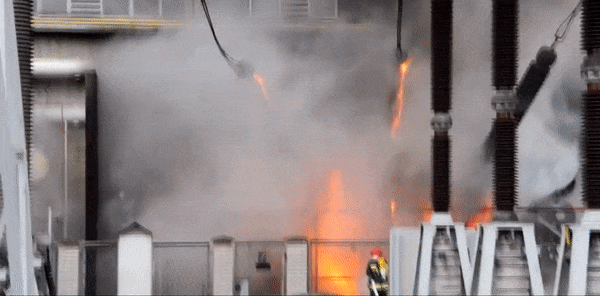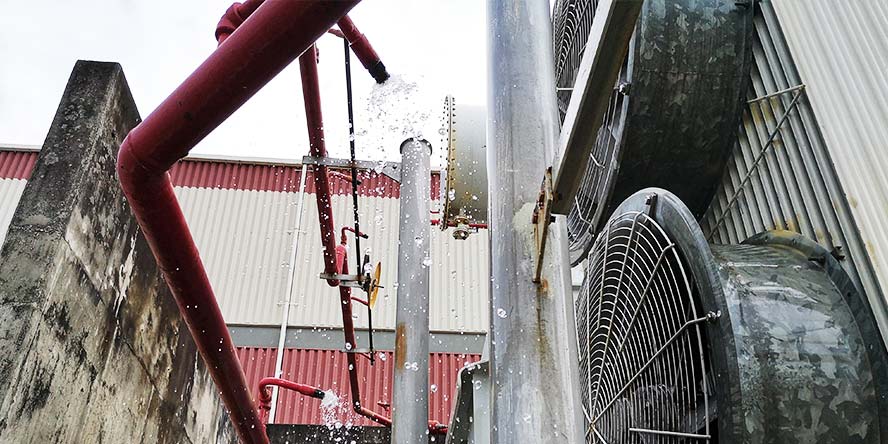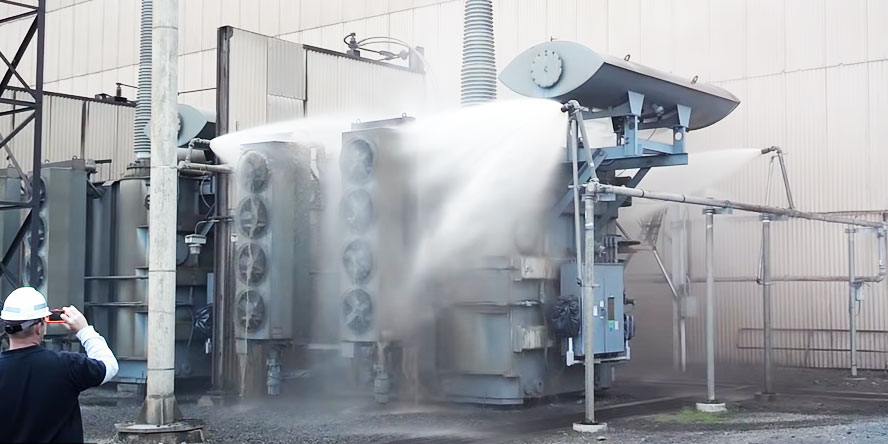Problem
- High voltage transformers are subject to the risk of fire and explosion as a result of an electrical short circuit.
- Such events are sudden in their nature and thus the lack of a permanent fire suppression system may result in a total destruction of the transformer.
- This also poses a risk of fire spreading onto the remaining parts of the installation.
Remedy
- We have performed hydraulic calculations and designed a sprinkler fire protection system capable of covering the entire surface of the transformer with water.
- We have made a hydraulic (water) and electric connection with the existing fire protection systems, including the control system.
Designed in accordance with NFPA standards
Certified components
Full coverage of protected equipment
Transformer fires – examples and causes
- March 2014 – as TVN24 reports, 18 firefighting units are extinguishing a fire which has engulfed a transformer and cable ducts at Rybnik power plant.
- February 2021 – the Polish Press Agency reports that firefighters have managed to extinguish a transformer fire at Siekierki Combined Heat and Power Plant which had broken out two days earlier.
- February 2021 – the National Atomic Energy Agency reports a transformer fire at the Trillo-1 nuclear power plant in Spain. The fire did not compromise the security systems.

These are just three of dozens of transformer fires which have occurred in recent years. The event at Rybnik power plant was particularly well analysed. The cause for this event was presented in the study by Eng. Bolesław Słowiński, Senior Electrical Engineer at EDF Polska S.A. (the owner of Rybnik power plant at that time). The fire was caused by damage to the transformer bushing, which led to a massive short circuit.
Mr. Słowiński described the sequence of events in the following manner: An electrical short circuit resulted in an explosion in the transformer tank. As a result of the force of the explosion in the transformer, the welded upper cover of the tank was torn open, with the opening size of approx. 80 mm, along approx. 50% of its circumference. There was an ejection and leakage of transformer oil, which caught fire; subsequently, the fire engulfed the entire unit transformer.
Bushing damage is one of the two most common causes of this type of failures. Transformer fires and explosions can be also caused by a short circuit due to insulation failure on the transformer winding. Still, the pattern of events in such a case is similar to that described above.
A transformer fire and/or explosion entails significant costs required to repair or replace the equipment and, often, equipment downtime is necessary. This is not all though – in the worst case scenario, the fire may spread over to the power unit.
Sprinkler system for transformers
Our client – a power industry company – was fully aware of the above-mentioned risks. It already had ensured fire protection systems for two other transformers located at the same site. Our task was to perform calculations and design a sprinkler system for two new transformers.

An exemplary transformer fire suppression system
The installation formed a cage surrounding the transformers on each side. Several dozens of sprinklers were mounted on the cage in such a way as to enable the entire transformer and its instrumentation to be covered with water, if needed.
In order to facilitate water fire protection system maintenance, solutions similar to those already deployed at the two older transformers were implemented.
The task was performed in accordance with NFPA 15 (Standard for Water Spray Fixed Systems for Fire Protection) and NFPA 850 (Recommended Practice for Fire Protection for Electric Generating Plants and High Voltage Direct Current Converter Stations) while all components have all the necessary certificates and approvals.
Transformer fire: water sprinkler system
A control and measuring system has been provided to ensure proper operation of the sprinkler system designed to extinguish fires of unit transformers. The system enables activation of a sound and a visual alarm and activation of the extinguishing system. The primary objective of the system:
- Activation of the sprinkler system through the “Initiate extinguishing” buttons located in the control room and in the flood valve room
- Monitoring of the flood valve status
- Monitoring of the 3-band flame detector
- Monitoring of the Buchholz relay
- Enabling emergency procedures
As far as this part of the task is concerned, we cooperated with our business partner responsible for the implementation of the IT control system.





